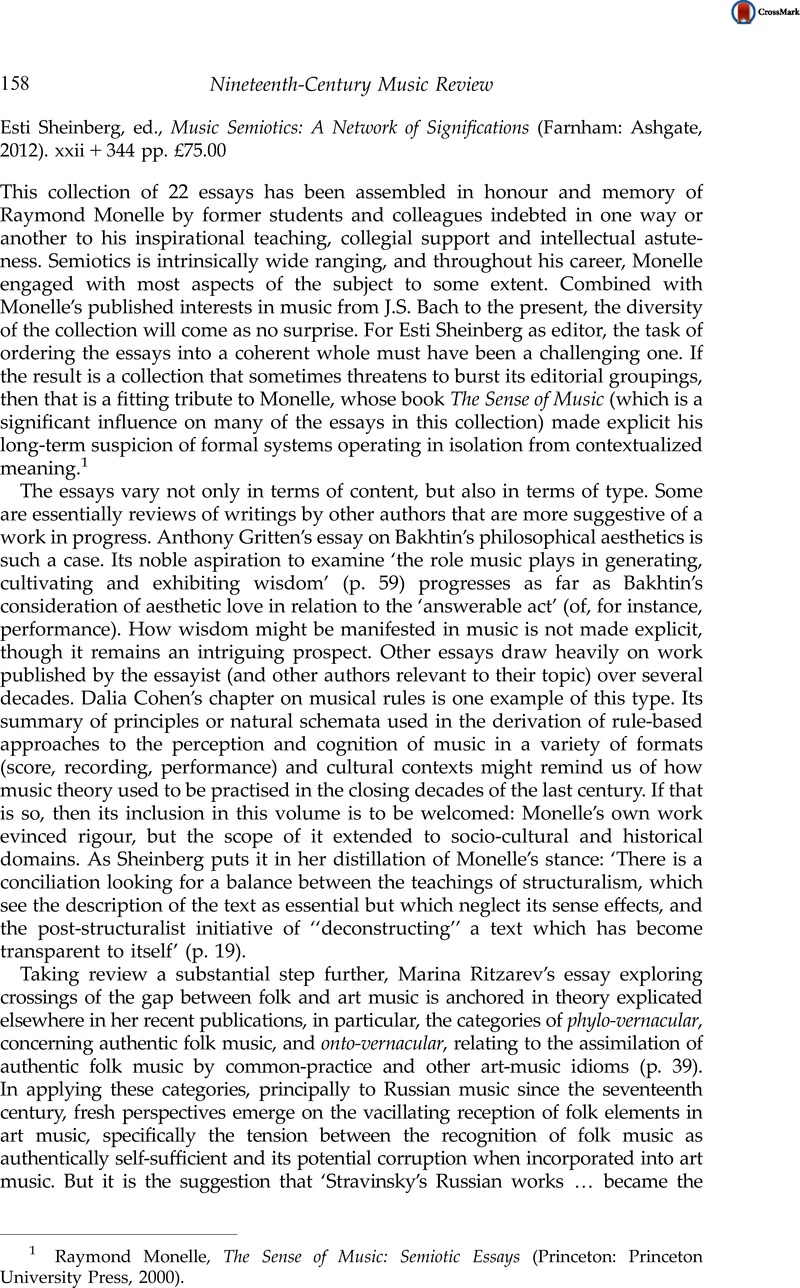No CrossRef data available.
Published online by Cambridge University Press: 17 June 2015

1 Monelle, Raymond, The Sense of Music: Semiotic Essays (Princeton: Princeton University Press, 2000)Google Scholar.
2 In this volume, Michael Spitzer's essay on the topic of emotion is the clearest example of combining semiotics with psychological enquiry. He also attaches significance to neuromapping when he comments on ‘the dialectic between “core affect” and conceptualized emotions (associated, respectively, with the amygdale and neocortex)’ (p. 223). Physiology (as an aspect of psychobiology) is a theme in the volume edited by Gritten, Anthony and King, Elaine, New Perspectives on Music and Gesture (Farnham: Ashgate Publishing Ltd., 2011)Google Scholar.
3 This position is expressed in the strongest terms in a quote from Odo Marquard (p. 32): ‘At first, philosophy was competent in everything; then it was competent in some things; today, philosophy is competent for one thing only – namely, to acknowledge its own incompetence’. Marquard, Odo, ‘Competence in Compensating for Incompetence? (On the Competence and Incompetence of Philosophy)’, in Odo Marquard, Farewell to Matters of Principle, trans. R.M.Wallace (New York: Oxford University Press, 1989)Google Scholar. For the full provocative account see Bálint Veres chapter in the book under review.
4 Hatten is quoting from Black, Max, ‘Models’ in Models and Metaphors: Studies in Language and Philosophy (Ithaca: Cornell University Press, 1962)Google Scholar: 37.
5 Identifying musical objects systematically with reference to music beyond the particular piece under consideration leads to what I have described as poietic and esthesic entities – terms that are an extension of those used by Jean-Jacques Nattiez. See Borthwick, Alastair, Music Theory and Analysis: The Limitations of Logic (New York: Garland Publishing, 1995)Google Scholar and Nattiez, Jean-Jacques, Music and Discourse: Toward a Semiology of Music, trans. Carolyn Abbate (Princeton: Princeton University Press, 1990)Google Scholar.
6 Curry also draws on the work of Karl-Otto Apel, Charles S. Peirce: From Pragmatism to Pragmaticism, trans. John Michael Krois (Amherst: University of Massachusetts Press, 1981).
7 Ryle, Gilbert, The Concept of Mind (New York: Barnes & Noble, 1949)Google Scholar.
8 Monelle, Raymond, The Musical Topic: Hunt, Military and Pastoral (Bloomington: Indiana University Press, 2006)Google Scholar.